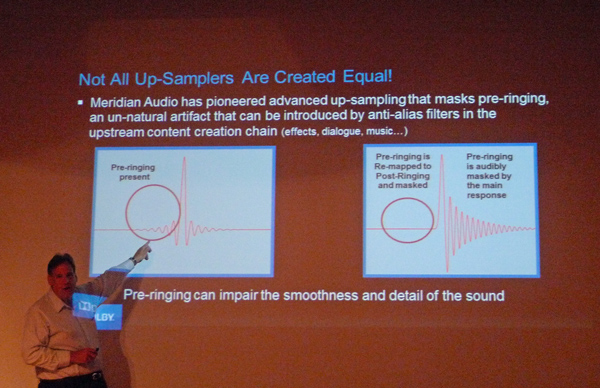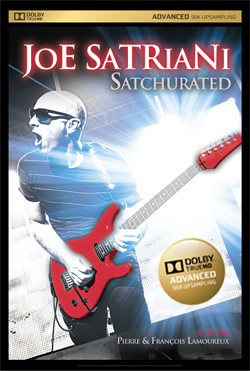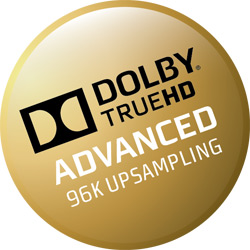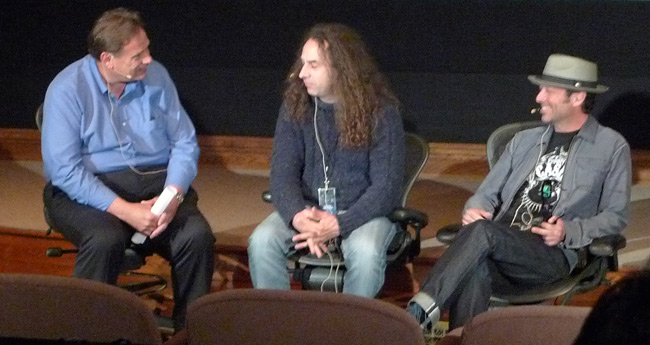When consumers hear the word Blu-ray, they probably think first of the beautiful 1080p picture. But equally impressive is the high quality surround sound. Lossless codecs such as Dolby TrueHD are capable of delivering bit-perfect identical copies of the movie studio masters on a home media format, with reduced bandwidth and storage requirements on the disc. But Dolby Labs isn't content to just rest on their laurels. They're driven to make the sound quality of Blu-ray even better. But how can you make lossless surround sound, already an exact match of the studio master, event better? Dolby's answer is to improve the studio master.
Although Blu-ray can handle Dolby TrueHD audio tracks up to 7.1 channels at 24-bit precision and with a sampling rate of 96 KHz (even higher if you use fewer tracks), the actual movie production chain is typically limited to the 48 Khz sampling rate. This is due to the tools and systems in use by most movie production houses only supporting up to 48 KHz sampling rates. The lower sampling rate is still capable of great sound - better than CD - but there can be some digital artifacts introduced in the recording, mixing and mastering process which diminish the overall sound quality: brittle highs, congestion in the sound stage, excessively harsh transients: these are but a few of the "digital nasties" that can be introduced into the signal.
Ideally, movie and sound mixers would work at the higher 96 KHz sampling rate which offers a cleaner overall sound. But short of upgrading everyone in all the studios and 3rd party mastering houses to 96 KHz gear (no mean feat), we seem to be stuck at 48K. Dolby decided they would see if they could improve the sound of these 48 KHz soundtracks. To do so, they turned to a partner of theirs, high-end audio manufacturer, Meridian.
Meridian has been doing an enhanced type of digital upsampling in their CD players for some time. Meridian filtering and upsampling technology smoothes out high frequencies on music CDs by upsampling the digital audio data and applying a pre-ring filter to the signal. This filter identifies particular artifacts of digital recording and masks them to make them inaudible. The effect is that digital recordings sound more natural. Meridian's so-called "apodizing" filter is embedded in their highly rated 808.2 CD player, which sells for the bargain price of $18,000 and has received enthusiastic praise from reviewers and consumers alike.


Dolby is calling it their Advanced 96K Upsampling technology and they are working with the studios and mastering/production houses now to explain the benefits of the technology in the hopes that these companies will use it on current and future Blu-ray releases. Although the product is only being officially announced today, there are already a few titles on the market (or coming soon) which take advantage of this technology. The titles include the Chinese film, "The Flowers of War," Joe Satriani's concert film, "Satchurated: Live in Montreal," and "San Francisco Symphony at 100." We attended a screening of Joe Satriani's concert film in Dolby's screening room and the quality of the audio was impeccable (not to mention the performance of the players).
So will anyone care? Particularly audiophiles and hobbyists who are looking for the best picture and sound quality from their home entertainment experience? Based on what Editor at Large Chris Chiarella and I heard in a series of demos at Dolby's Headquarters in San Francisco this week, they should. We got to listen to several movie and music tracks before and after the Advanced 96K Upsampling process, and although some of the differences were subtle, the improvements in sound quality were clear: enhanced soundfield depth, less congestion in the overall sonic presentation, and improved high frequency detail were a few of the noticeable improvements.

For me, the differences were most noticeable in music cuts: the whack of a snare drum, the pluck of a guitar string, the strike of a cymbal - all were more natural-sounding and less abrasive in 96K. A demo clip from the recently recorded 100th Anniversary Celebration Blu-ray of the San Francisco Orchestra was perhaps most obvious with the whole soundstage opening up at 96 Khz giving us the ability to hear individual instruments more clearly in the mix. When switching over to the same cut at 48 KHz, the sonic image sounded flat and congested by comparison.

So what's Dolby's play? Well the altruistic would say they are doing this to advance the state of the art in home entertainment. And that's true. But from a business perspective, their goal is clear: by providing this as a free (and unique) value added feature in their Media Producer tool, they're allowing the studios to add value to their new and catalog releases without paying a premium. And this added value may convince studios and other Blu-ray creators to use Dolby TrueHD as their lossless audio format of choice on Blu-ray Disc. Based on what we heard this week, we think this would be a very good thing.
More Information:
Special thanks to Dolby for covering travel expenses associated with our visit to Dolby Labs.